5.2 Hardware Development Tools
Numerous hardware development tools are available for the PIC18 microcontrollers. Some of these products are manufactured by Microchip Inc., and some by third-party companies. The most ones are:
• Development boards
• Device programmers
• In-circuit debuggers
• In-circuit emulators
• Breadboards
Development boards are invaluable microcontroller development tools. Simple development boards contain just a microcontroller and the necessary clock circuitry. Some sophisticated development boards contain LEDs, LCD, push buttons, serial ports, USB port, power supply circuit, device programming hardware, and so on. This section is a survey of various commercially available PIC18 microcontroller development boards and their specifications.
LAB-XUSB Experimenter Board
The LAB-XUSB Experimenter board (see Figure 5.1), manufactured by microEngineering Labs Inc., can be used in 40-pin PIC18-based project development. The board is available either assembled or as a bare board.
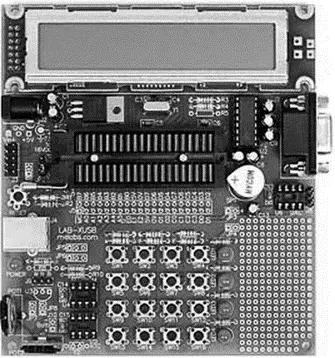
Figure 5.1: LAB-XUSB Experimenter board
The board contains:
• 40-pin ZIF socket for PIC microcontroller
• 5-volt regulator
• 20MHz oscillator
• Reset button
• 16-switch keypad
• Two potentiometers
• Four LEDs
• 2-line by 20-character LCD module
• Speaker
• RC servo connector
• RS232 interface
• USB connector
• Socket for digital-to-analog converter (device not included)
• Socket for I²C serial EEPROM (device not included)
• Socket for Dallas DS1307 real-time clock (device not included)
• Pads for Dallas DS18S20 temperature sensors (device not included)
• In-circuit programming connector
• Prototyping area for additional circuits
PICDEM 2 Plus
Th PICDEM 2 Plus kit (see Figure 5.2), manufactured by Microchip Inc., can be used in the development of PIC18 microcontroller-based projects.
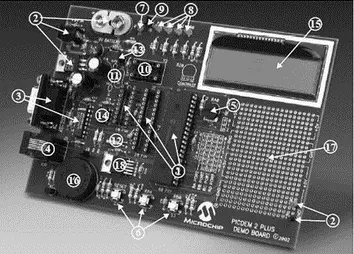
Figure 5.2: PICDEM 2 Plus development board
The board contains:
• 2×16 LCD display
• Piezo sounder driven by PWM signal
• Active RS-232 port
• On-board temperature sensor
• Four LEDs
• Two push-button switches and master reset
• Sample PIC18F4520 and PIC16F877A flash microcontrollers
• MPLAB REAL ICE/MPLAB ICD 2 connector
• Source code for all programs
• Demonstration program displaying a real-time clock and ambient temperature
• Generous prototyping area
• Works off of a 9V battery or DC power pack
PICDEM 4
The PICDEM 4 kit (see Figure 5.3), manufactured by Microchip Inc., can be used in the development of PIC18 microcontroller-based projects.
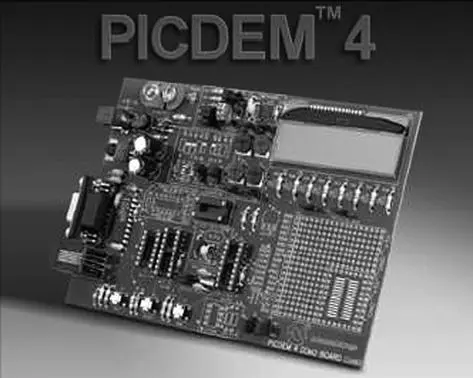
Figure 5.3: PICDEM 4 development board
The board contains:
• Three different sockets supporting 8-, 14-, and 18-pin DIP devices
• On-board +5V regulator for direct input from 9V, 100 mA AC/DC wall adapter
• Active RS-232 port
• Eight LEDs
• 2×16 LCD display
• Three push-button switches and master reset
• Generous prototyping area
• I/O expander
• Supercapacitor circuitry
• Area for an LIN transceiver
• Area for a motor driver
• MPLAB ICD 2 connector
PICDEM HPC Explorer Board
The PICDEM HPC Explorer development board (see Figure 5.4), manufactured by Microchip Inc., can be used in the development of high pin count PIC18-series microcontroller-based projects.
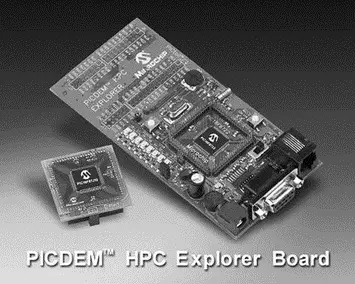
Figure 5.4: PICDEM HPC Explorer development board
The main features of this board are:
• PIC18F8722, 128K flash, 80-pin TQFP microcontroller
• Supports PIC18 J-series devices with plug-in modules
• 10 MHz crystal oscillator (to be used with internal PLL to provide 40 MHz operation)
• Power supply connector and programmable voltage regulator, capable of operation from 2.0 to 5.5 V
• Potentiometer (connected to 10-bit A/D, analog input channel)
• Temperature sensor demo included
• Eight LEDs (connected to PORTD with jumper disable)
• RS-232 port (9-pin D-type connector, UART1)
• Reset button
• 32 KHz crystal for real-time clock demonstration
MK-1 Universal PIC Development Board
The MK-1 Universal PIC development board (see Figure 5.5), manufactured by Baji Labs, can be used for developing PIC microcontroller-based projects with up to 40 pins. The board has a key mechanism which allows any peripheral device to be mapped to any pin of the processor, making the board very flexible. A small breadboard area is also provided, enabling users to design and test their own circuits.
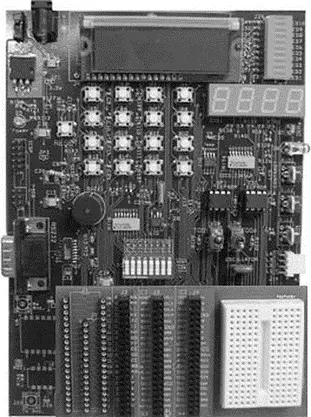
Figure 5.5: MK-1 Universal PIC development board
The board has the following features:
• On-board selectable 3.3V or 5V
• 16×2 LCD character display (8-or 4-bit mode supported)
• 4-digit multiplexed 7-segment display
• Ten LED bar graph (can be used as individual LEDs)
• Eight-position dip switch
• Socketed oscillator for easy change of oscillators
• Stepper motor driver with integrated driver
• I²C real-time clock with crystal and battery backup support
• I²C temperature sensor with 0.5 degree C precision
• Three potentiometers for direct A/D development
• 16-button telephone keypad wired as 4×4 matrix
• RS232 driver with standard DB9 connector
• Socketed SPI and I²C EEPROM
• RF Xmit and receive sockets
• IR Xmit and receive
• External drive buzzer
• Easy access to pull up resistors
• AC adapter included
SSE452 Development Board
The SSE452 development board (see Figure 5.6), manufactured by Shuan Shizu Electronic Laboratory, can be used for developing PIC18-based microcontroller projects, especially the PIC18FXX2 series of microcontrollers, and also for programming the microcontrollers.
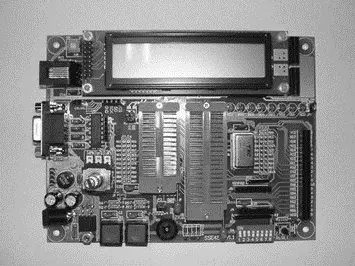
Figure 5.6: SSE452 development board
The main features of this board are:
• One PCB suitable for any 28-or 40-pin PIC18 devices
• Three external interrupt pins
• Two input-capture/output-compare/pulse-width modulation modules (CCP)
• Support SPI, I²C functions
• 10-bit analog-to-digital converter
• RS-232 connector
• Two debounced push-button switches
• An 8-bit DIP-switch for digital input
• 4×4 keypad connector
• Rotary encoder with push button
• TC77 SPI temperature sensor
• EEPROM (24LC04B)
• 2×20 bus expansion port
• ICD2 connector
• On-board multiple digital signals from 1Hz to 8MHz
• Optional devices are 2×20 character LCD, 48/28-pin ZIF socket
Читать дальше


















